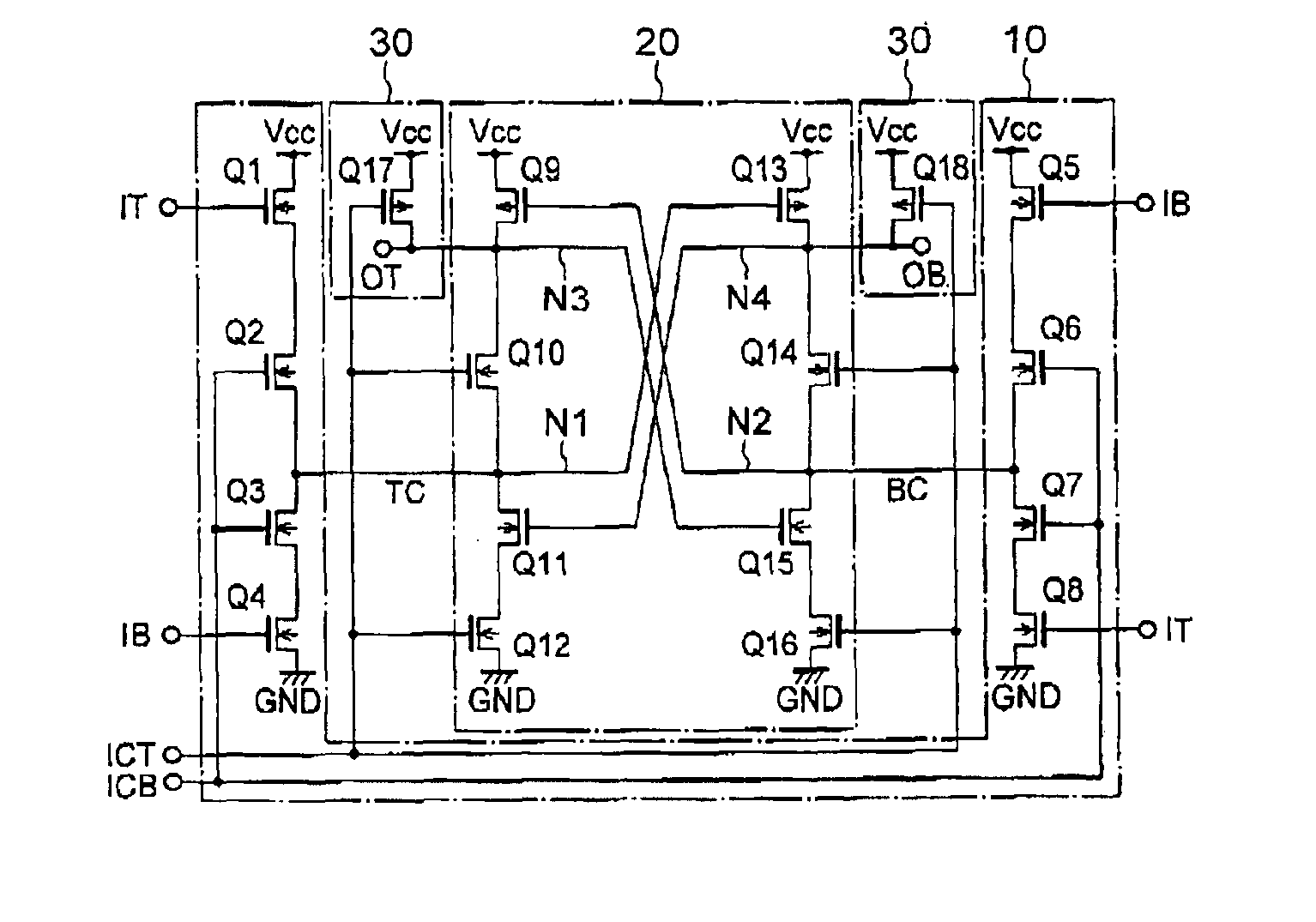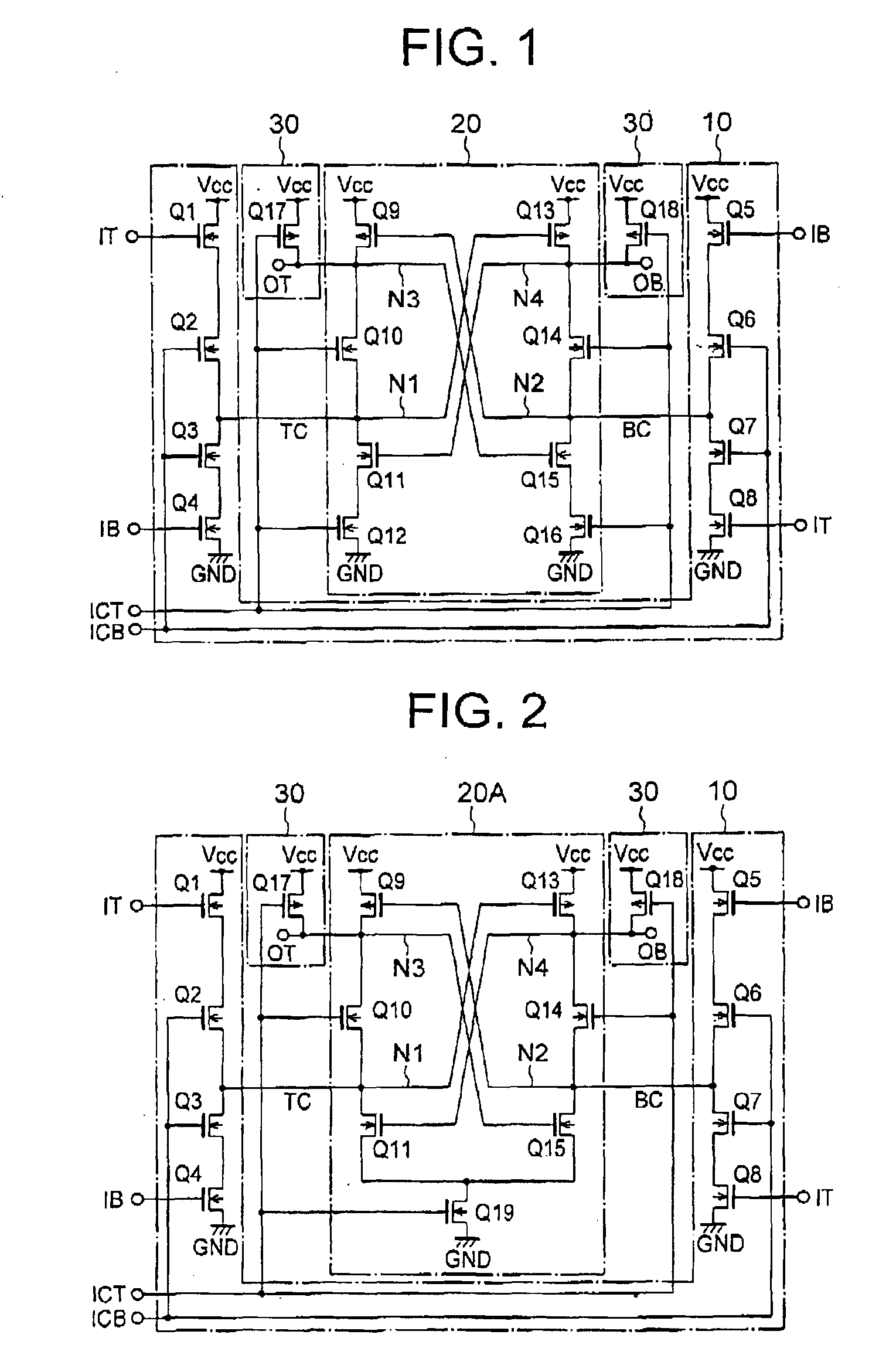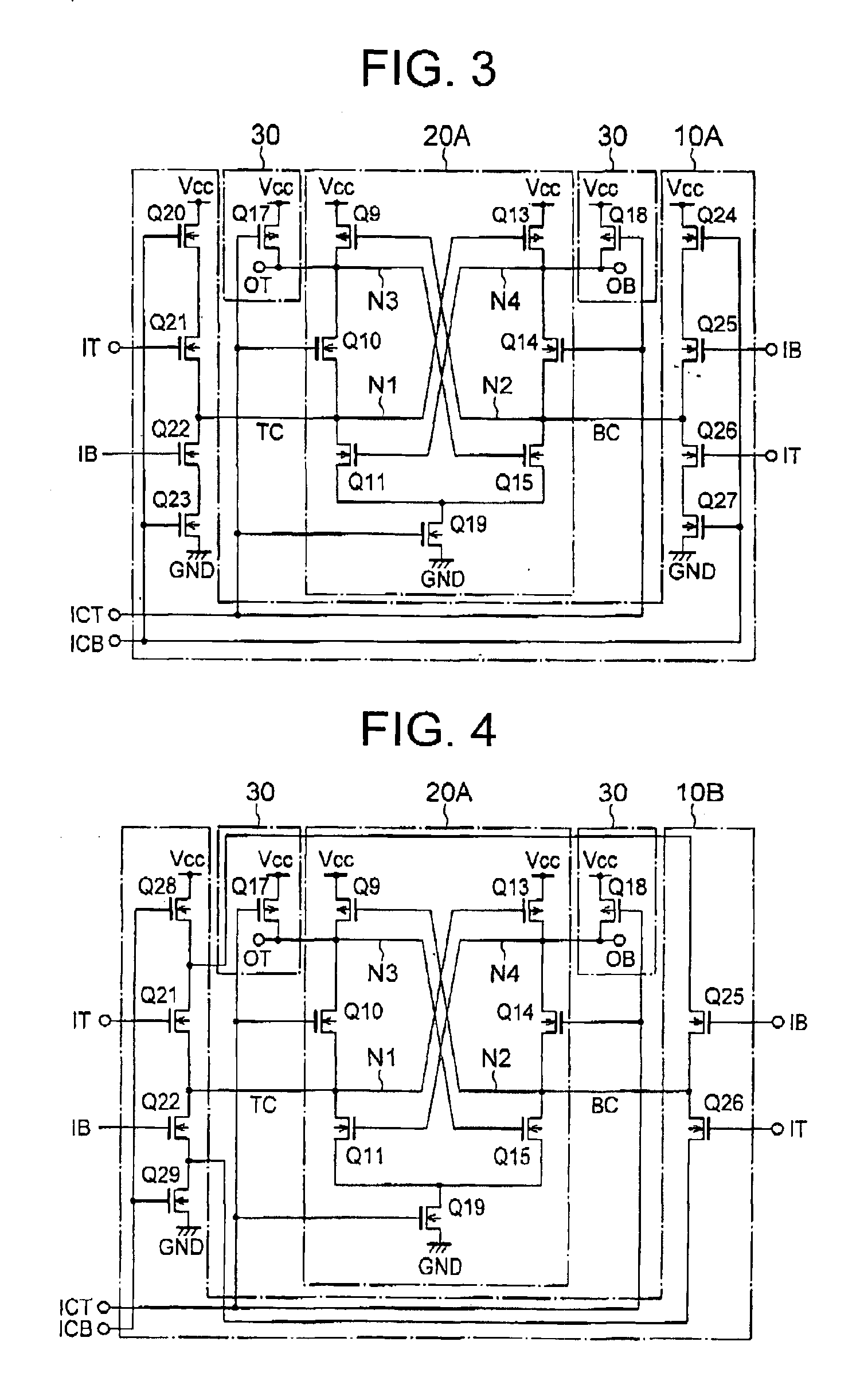Latch circuit for latching a pair of complementary data signals
a latch circuit and complementary data technology, applied in the direction of pulse manipulation, pulse technique, instruments, etc., can solve the problems of large increased time length needed for the discharge and injection of electric charges, and malfunction of the latch circuit in the signal transmission. , to achieve the effect of reducing the dead zone of the latch circuit, reducing the time length of the signal inversion, and reducing the energy burden on the power source lin
- Summary
- Abstract
- Description
- Claims
- Application Information
AI Technical Summary
Benefits of technology
Problems solved by technology
Method used
Image
Examples
Embodiment Construction
[0025]Now, the present invention is more specifically described with reference to accompanying drawings, wherein similar constituent elements are designated by similar reference numerals.
[0026]Referring to FIG. 1, a latch circuit according to a first embodiment of the present invention includes a sample section 10 for responding to a pair of complementary clock signals ICT and ICB to sample a pair of input complementary data signals IT and IB, a latch section 20 for latching the complementary data signals sampled by the sample section 10 to transmit the same to a next stage circuit (not shown), and a precharge section 30 for precharging the output nodes N3 and N4 of the latch section (referred to as latch output nodes N3 and N4) during a sample period.
[0027]The sample section 10 includes a first data input block including four n-channel transistors (nMOSFETs) Q1 to Q4 connected in series from the high-potential power source line VCC to the low-potential power source line GND consecu...
PUM
 Login to View More
Login to View More Abstract
Description
Claims
Application Information
 Login to View More
Login to View More - R&D
- Intellectual Property
- Life Sciences
- Materials
- Tech Scout
- Unparalleled Data Quality
- Higher Quality Content
- 60% Fewer Hallucinations
Browse by: Latest US Patents, China's latest patents, Technical Efficacy Thesaurus, Application Domain, Technology Topic, Popular Technical Reports.
© 2025 PatSnap. All rights reserved.Legal|Privacy policy|Modern Slavery Act Transparency Statement|Sitemap|About US| Contact US: help@patsnap.com



